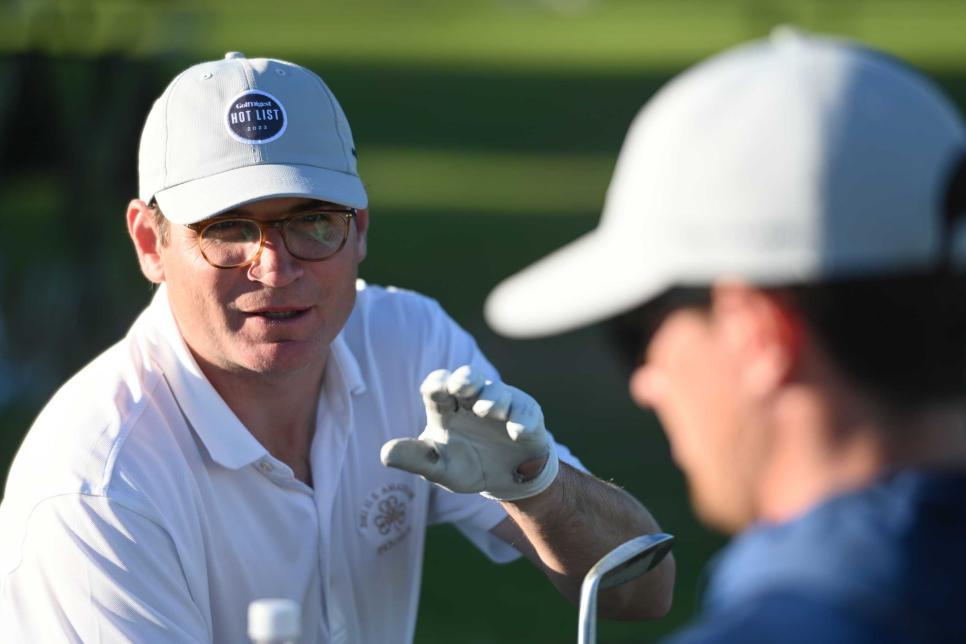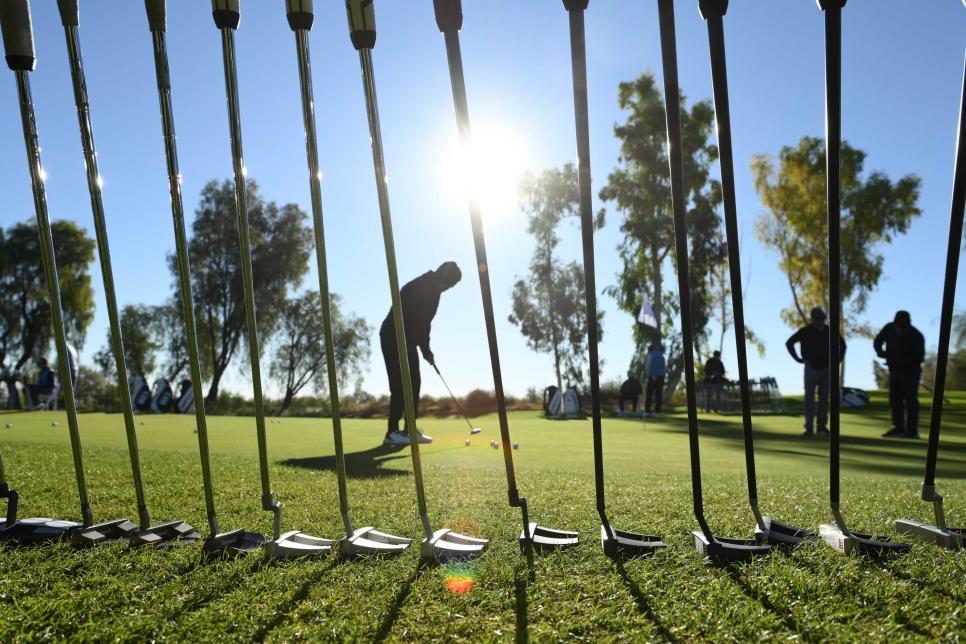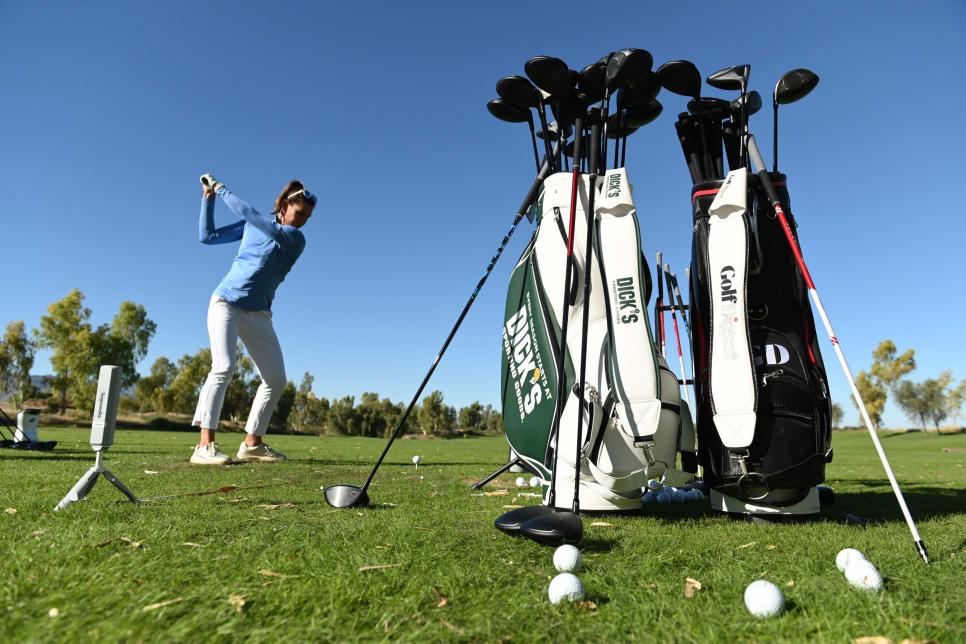We’ve long said that the Golf Digest Hot List should be the start point, not the end, of your search for the best equipment for your game. It's a trusted tool that can narrow the overwhelming choices of available clubs to a manageable number and better inform your session with a qualified fitter. This year, we've added numerous features to the Hot List to help you narrow those choices even faster.
Just like with a good fitter, it helps to answer a few questions beforehand that will identify your most important equipment needs. The only real requirement is to be brutally honest with yourself. Here are eight queries you should already know the answer to before embarking on your club-buying journey.
What am I hoping to get out of new clubs?
A lot of people want new clubs. Not everyone, however, knows why they want them. Maybe you just want new toys. Or perhaps you're fed up with the substandard performance you're receiving from your current sticks. Or maybe you're just looking to burn that money you won in your Fantasy Football league before the spouse finds out you have it. Regardless of the reason, you should know why you’re doing this in the first place.
What’s the worst club in my bag?
You might be in love with the idea of grabbing hold of the latest supersonic driver, but is that what you really need? Asking yourself the above question allows you to zero in on a club (or clubs) that would serve you better than simply replacing a driver that’s only two years old. Perhaps it’s your long irons and hybrids that need an upgrade. Or that old blade-style putter that once was super reliable but now is nothing short of balky. In short, think need, not want.

J.D. Cuban
What’s my budget?
No one likes to admit to spending limits, but most of us have them. Just like any other purchase you make, know what your threshold is before trying out new sticks. You don’t want to fall in love with a $1,400 set of irons if you’re not willing to spend more than $900. Why? Because you’re either going to overspend or you might feel like you’re getting a lesser club. The Golf Digest Hot List details the cost of every club so you can get a head start. Just like gambling on an app, set your limit and stick to it. There’s likely something perfectly good for in your price range
Am I looking for distance or better accuracy?
OK, everyone wants more yards. That's like asking kids if they want more ice cream—they're not likely to turn you down. But the fact is the gigantic leaps in distance (barring that your current clubs are ill-fit or never fit to you) are a thing of the past. That's not a knock on manufacturers, but the reality that virtually all of them have gotten really good at getting close to the USGA limit on spring-like effect. Given that, determine if tightening your dispersion—whether left to right, long or short or both—might be a better benefit to your game. After all, a ball that lands in the fairway is likely to gain you more yards of roll than one that finds the tall grass. And finding the green is always better than going over it.
Do I need new wedges?
Wedges might be the least considered clubs of all, normally replaced only when the grooves on your old ones are well past their useful life. We get it. The number of loft, bounce and grind combinations can be mind-numbing. And what’s the use of testing wedges off a mat or with a range ball? Valid points, but to give the wedges short-shrift is a huge mistake. There are things you will learn by asking yourself the right questions: Do I have a wedge for pretty much every yardage I would need one for? If not, is there a club you hit less often (say a 4-iron) that you could swap out for a fourth or even fifth wedge? Is it possible the bounce and grind of your wedges are ill-suited for your swing or the condition of your course? And if your highest-lofted wedge says “S” on the sole, you have your answer. You need new wedges.
What iron category do I belong in?
Not every sole works for every type of player, which is why, as a general rule (but not an exclusive one), better players tend to gravitate toward the thinner soles generally found on players or players-distance irons. Those allow for more versatility in shot-making. Those less skilled, meanwhile, tend to lean toward thicker soles on game-improvement or even super-game-improvement irons. Those clubs boast lower centers of gravity and assist in getting the ball airborne while also mitigating the effect of shots hit fat. Which one are you? Be honest, now.
Am I pushing or pulling putts?

J.D. Cuban
When in the market for a putter, it's not enough to say you're missing too many makable putts. It’s knowing how you’re missing those putts that can help point you in the right direction of a new flat stick. It can help you choose between either a face-balanced putter (many mallets and center-shafted blades) or perhaps a putter with toe hang (most heel-shafted blades and some mallets). Knowing your miss is key to eventually more makes.
What does my typical shot shape look like?
There is a temptation when buying new clubs to be swayed by the best numbers leaping off the launch monitor. But buying clubs based off your Sunday punch is a mistake of epic proportions. If you're in the market for new clubs, the odds are pretty strong that something is amiss. Knowing whether you are fighting the dreaded slice or are challenged getting the ball to an appropriate apex height are valuable pieces of information going into your buying journey.



